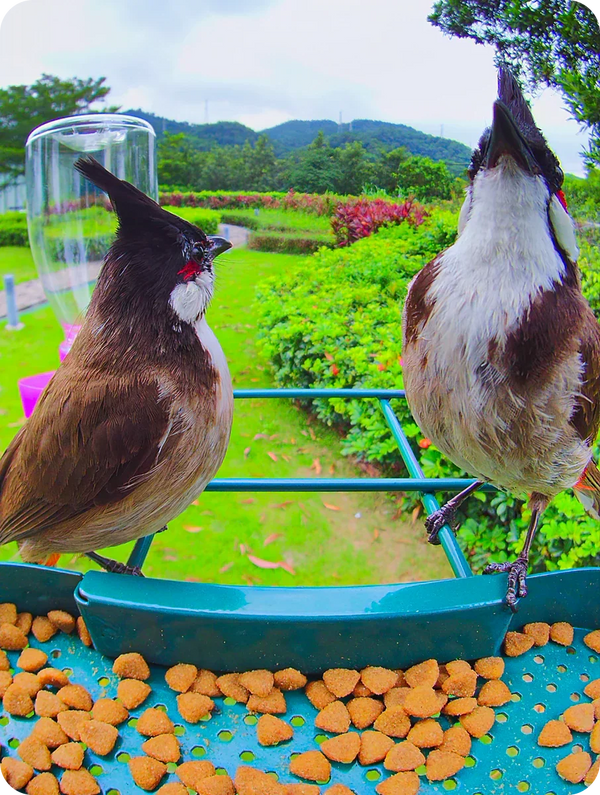Unlock the Secret to Attracting Hummingbirds: Your Ultimate Guide to Nectar and Feeders!
Hummingbirds are one of nature's most captivating creatures, with their iridescent feathers and incredible flying abilities. These tiny birds are not just a delight to watch; they play a crucial role in pollination, making them an essential part of our ecosystem. To attract these beautiful visitors to your garden, providing the right hummingbird feeders and nectar is paramount. This article serves as a comprehensive guide for anyone looking to become a hummingbird enthusiast, whether you're a seasoned birdwatcher or just starting. We'll explore the dietary needs of hummingbirds, the types of feeders available, and how to create the perfect nectar to keep these delightful creatures coming back for more.

Understanding Hummingbirds and Their Nectar Needs
Hummingbirds primarily feed on nectar, a sugary liquid produced by flowers, which provides them with essential energy and nutrients. Their high metabolism requires them to consume large amounts of nectar daily, often visiting hundreds of flowers to meet their energy needs. In addition to nectar, hummingbirds also consume small insects and spiders for protein, which is vital for their growth and development. When creating a feeding station, it's important to replicate the natural nectar found in flowers. This is where sugar-water mixtures come into play. A simple solution of four parts water to one part sugar mimics the natural nectar and will keep hummingbirds coming back to your feeder for a refreshing meal.
Choosing the Right Hummingbird Feeders
When it comes to selecting a hummingbird feeder, there are several types to consider: tube feeders, saucer feeders, and window feeders. Tube feeders are popular for their ability to attract multiple birds at once, featuring several feeding ports. Saucer feeders, on the other hand, are designed to hold a shallow pool of nectar, making it easier for birds to access. Lastly, window feeders allow you to observe hummingbirds up close, as they attach directly to your window. Each type has its benefits and drawbacks, so it’s essential to consider your specific needs. For instance, if you have limited outdoor space, a window feeder might be the best option, while a tube feeder can accommodate a larger number of birds if you have a spacious garden.
Feeder Features to Consider
When choosing a hummingbird feeder, several features should be on your radar. Look for feeders made of durable materials that can withstand the elements, such as glass or sturdy plastic. Ease of cleaning is crucial, as dirty feeders can harbor mold and bacteria that are harmful to hummingbirds. A feeder with a larger capacity means fewer refills, but be mindful that nectar should not sit too long to prevent fermentation. Additionally, consider feeders with ant moats, which deter pests from reaching the nectar. These small features can significantly enhance your success in attracting hummingbirds.
How to Make Homemade Hummingbird Nectar
Creating homemade hummingbird nectar is simple and cost-effective. The basic recipe requires just sugar and water: mix one part granulated white sugar with four parts water and stir until dissolved. It's important to avoid using any dyes or artificial sweeteners, as these can be harmful to the birds. Once your nectar is prepared, you can fill your feeder and place it outdoors. Remember to store any unused nectar in the refrigerator for up to a week. This homemade solution not only provides nourishment for the hummingbirds but also allows you to enjoy the process of attracting and caring for these beautiful creatures.
Best Practices for Using Hummingbird Feeders
To maximize the effectiveness of your hummingbird feeders, placement and maintenance are key. Position your feeder in a shaded area, as direct sunlight can cause nectar to spoil more quickly. Near flowering plants or shrubs can attract more birds, as they will feel safe and find natural food sources nearby. A regular cleaning schedule is essential; aim to clean your feeder at least once a week, or more often during hot weather. When cleaning, use hot water and a brush to remove any residue effectively. Seasonal considerations are also important, as hummingbirds may migrate. Be sure to have your feeders ready before they arrive in the spring and keep them out until they leave in the fall. Additionally, be prepared to deal with pests like ants or bees, as these can deter hummingbirds. Using ant moats or relocating feeders can help keep these nuisances at bay.
Creating a Thriving Hummingbird Habitat
Attracting hummingbirds to your garden can be a rewarding experience that brings joy and beauty to your outdoor space. By understanding their nectar needs, choosing the right feeders, and implementing best practices, you can create an inviting environment for these delightful birds. Remember, the key to success lies in the details—selecting a feeder that suits your needs and preparing a homemade nectar solution will set the stage for an enchanting display of nature. So, take the plunge and start your journey into the fascinating world of hummingbirds. With a little effort, you'll soon find yourself mesmerized by their beauty and grace as they flit around your garden.






Comments